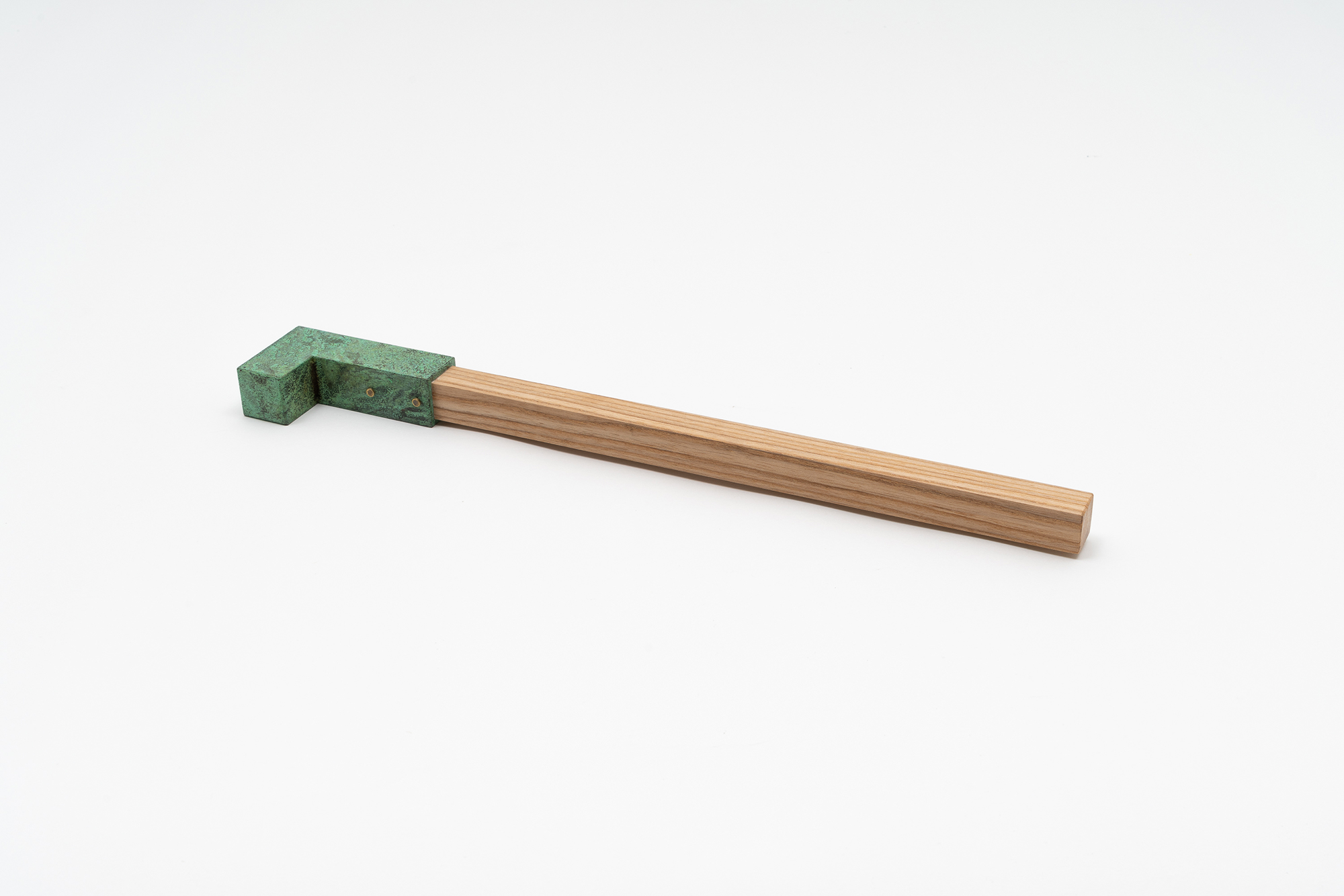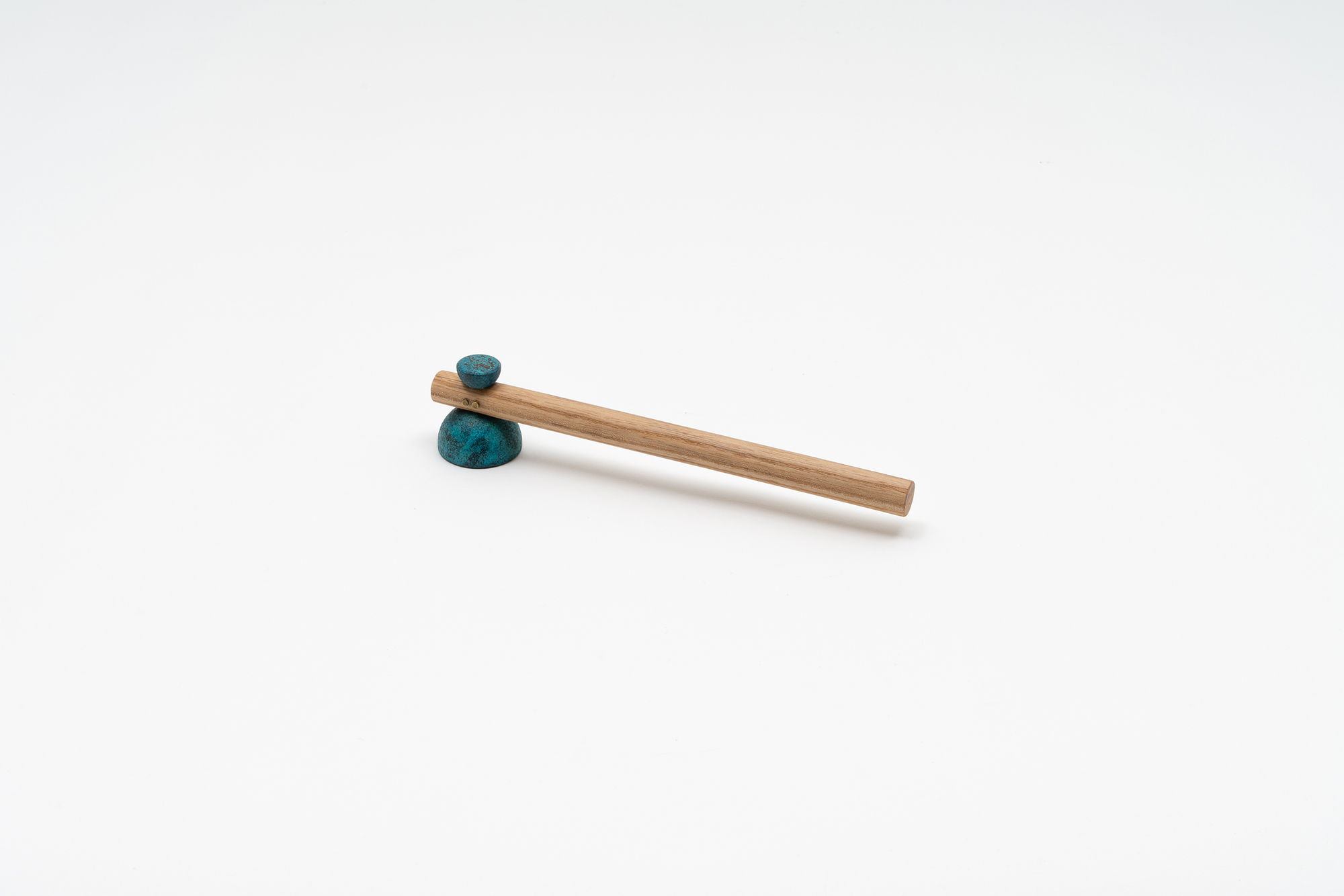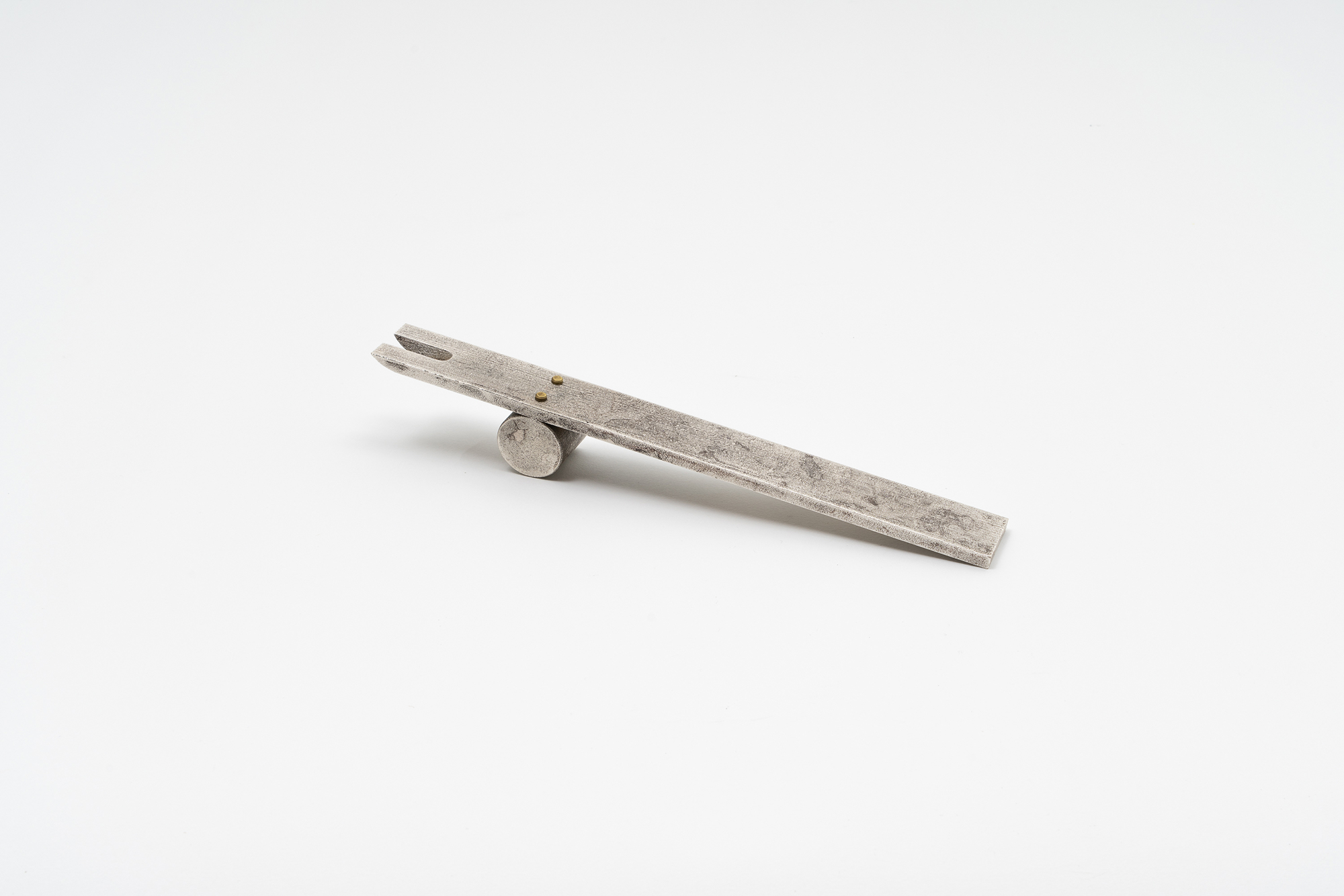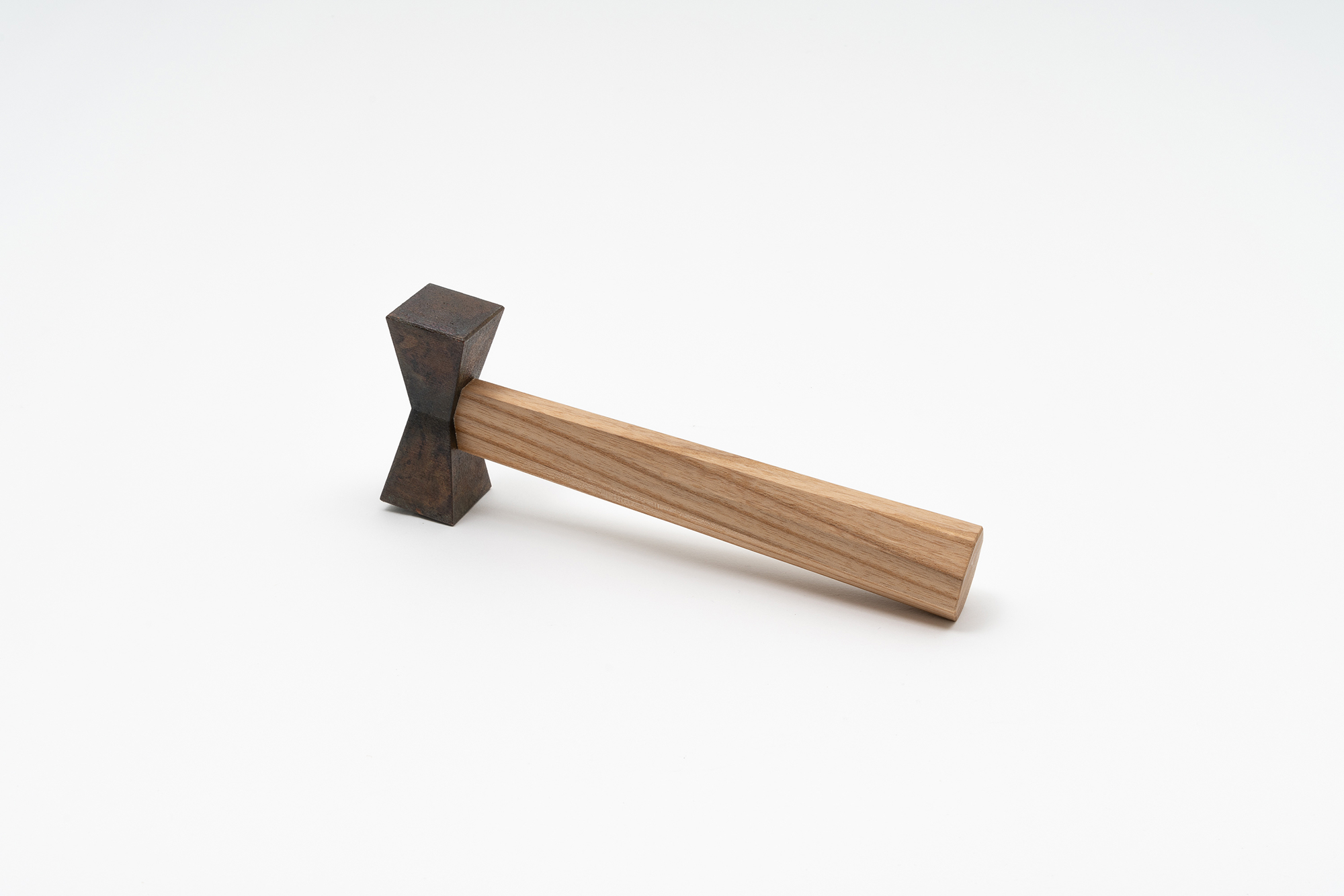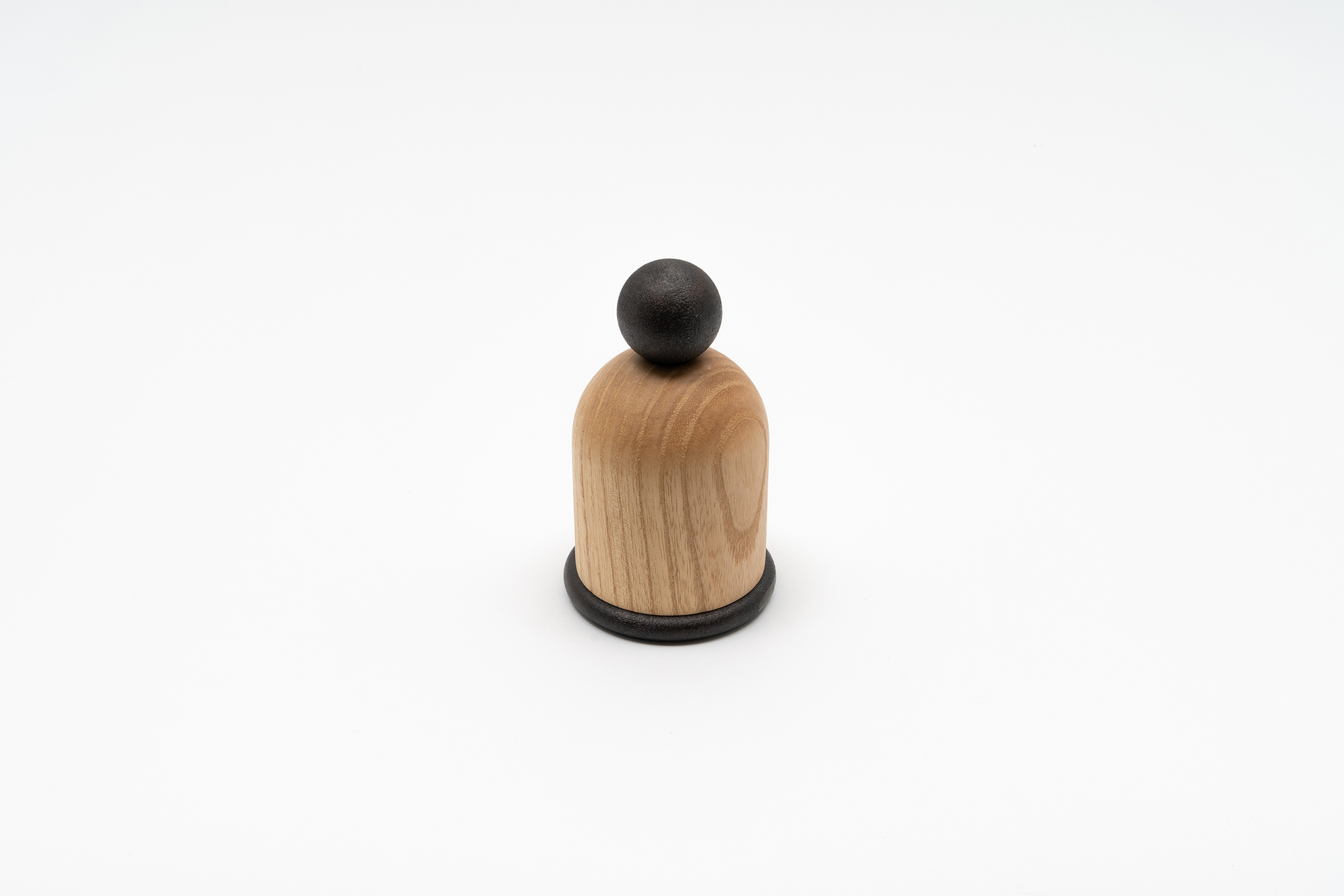The hammer is one of the most primitive and foundational tools invented by humans and remains a common tool to date. The earliest hammers date back over 3 million years but since the introduction of the modern claw hammer, very little of the hammer’s form has been reconsidered.
The Hammer Study is a formal and phonetic interpretation of this common tool. The title for each form derives from various Japanese onomatopoeia which reveal the subtle, cultural sensitivity to material properties. For example, Kotsu-Kotsu is a sound of a solid object lightly hitting a surface, whereas Gan-Gan suggests a very violent, aggressive noise.
The collection was produced by combining the mechanical efficiency of a stainless steel 3D printer and the handcrafted artistry of Muro Kanamono, an over 200 year old metal workshop in Kyoto, Japan. The master craftsmen applied five different patinas using traditional techniques.
In an age when so much is digital and automated, there are many rich traditions and design languages that are fading along with these craftsmen. By integrating crafts with industrial technology, the project also aims to preserve history and skills that remain integral to how we modernize.
